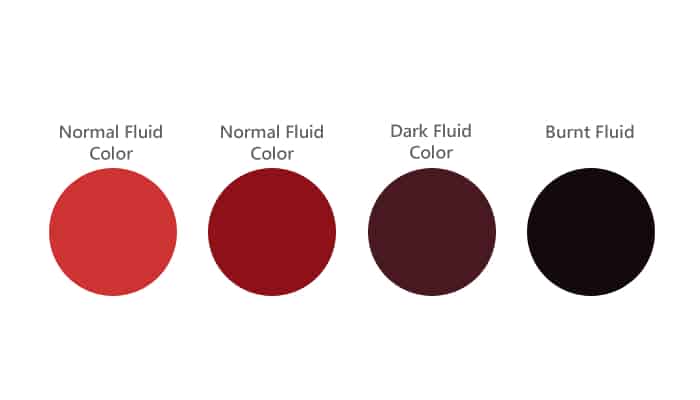Understanding Transmission Fluid for Your Dakota
When it comes to keeping your 2002 Dodge Dakota running smoothly, one of the most critical components to pay attention to is the transmission fluid. This fluid plays a vital role in the overall performance of your vehicle’s transmission system. Understanding the right type of fluid to use can save you from costly repairs down the line.
Manufacturer’s Recommendations
| Popular posts |
|---|
| What to do to prolong the life of your manual gearbox |
| Automatic transmission: what it is, how it works |
For the 2002 Dodge Dakota, the manufacturer recommends using **ATF+4** transmission fluid. This specific type of fluid is designed to meet the unique requirements of Chrysler vehicles, ensuring optimal performance and longevity of the transmission.
Why ATF+4?
Using the correct transmission fluid is crucial for several reasons:
- Compatibility: ATF+4 is formulated to work seamlessly with the internal components of the transmission, reducing wear and tear.
- Temperature Stability: This fluid has excellent thermal stability, which means it can handle high temperatures without breaking down, thus protecting your transmission.
- Improved Shifting: The right fluid ensures smooth gear changes, enhancing your driving experience and preventing slippage.
- Seal Protection: ATF+4 contains additives that help protect seals and gaskets, reducing the risk of leaks.
Specifications of ATF+4
When selecting transmission fluid, it’s essential to consider its specifications. Here are some key characteristics of ATF+4:
- Viscosity: ATF+4 typically has a viscosity rating of 9.3 cSt at 100°C, which is ideal for the operating conditions of your Dakota’s transmission.
- Color: This fluid usually has a red tint, making it easy to identify any leaks or contamination.
- Performance Standards: ATF+4 meets or exceeds the requirements set by Chrysler for their automatic transmissions, ensuring reliability.
Where to Find ATF+4
You can find ATF+4 at various auto parts stores, dealerships, and online retailers. Make sure to check the label to confirm that it meets Chrysler’s specifications. Avoid using generic or unapproved fluids, as they may not provide the same level of protection and performance.
Final Thoughts
Using the right transmission fluid is non-negotiable for maintaining the health of your 2002 Dodge Dakota’s transmission. Stick with ATF+4, as recommended by the manufacturer, and you’ll be on your way to a smoother, more reliable driving experience. Always consult your owner’s manual for any specific instructions or updates regarding fluid types and maintenance practices.
Recommended Oil Brands for Your Dakota’s Transmission
When it comes to choosing the right transmission fluid for your 2002 Dodge Dakota, not all fluids are created equal. While ATF+4 is the recommended type, the brand you choose can make a significant difference in performance and longevity. Based on feedback from various automotive forums and owner experiences, here are some of the top brands that Dakota owners trust.
Top Brands for ATF+4 Transmission Fluid
- Mopar ATF+4: As the original equipment manufacturer (OEM) fluid, Mopar’s ATF+4 is often the go-to choice for many Dakota owners. It meets all the specifications set by Chrysler and is known for its reliability and performance. Many users report smoother shifting and better overall transmission health when using this fluid.
- Valvoline MaxLife ATF: Valvoline’s MaxLife ATF is a popular choice among Dakota owners looking for a high-quality alternative to OEM fluids. This fluid is designed for both newer and older transmissions, providing excellent protection against wear and tear. Users appreciate its ability to maintain performance even under extreme conditions.
- Castrol Transmax ATF: Castrol is another reputable brand that offers a high-performance ATF+4 fluid. Many owners have shared positive experiences with this fluid, noting its ability to improve shifting quality and reduce transmission noise. It’s a solid option if you’re looking for something that meets or exceeds OEM specifications.
- Royal Purple Max ATF: Known for its high-performance lubricants, Royal Purple offers Max ATF, which is compatible with ATF+4 specifications. Owners who have used this fluid often report enhanced shifting performance and improved fuel efficiency. While it may be on the pricier side, many feel the benefits justify the cost.
- Amsoil Synthetic ATF: Amsoil is well-regarded in the automotive community for its synthetic oils. Their ATF is designed to provide superior protection and performance, especially in extreme temperatures. Dakota owners have praised its longevity and ability to maintain smooth operation over time.
What Owners Are Saying
Feedback from Dakota owners on various forums highlights some common themes when it comes to choosing transmission fluid:
- Performance: Many users emphasize that the right fluid can significantly impact shifting performance. Owners who switched to high-quality brands like Mopar or Valvoline reported noticeable improvements in smoothness and responsiveness.
- Longevity: Several owners noted that using reputable brands tends to extend the life of the transmission. They mentioned fewer issues with slipping and overheating when using fluids that meet the ATF+4 specifications.
- Price vs. Quality: While some owners are tempted to go for cheaper alternatives, many have shared experiences where lower-quality fluids led to problems down the line. Investing in a trusted brand often pays off in the long run.
- Availability: Owners appreciate that most of these recommended brands are readily available at local auto parts stores or online, making it easy to find the right fluid without hassle.
Final Recommendations
When selecting transmission fluid for your 2002 Dodge Dakota, consider sticking with one of the recommended brands that meet ATF+4 specifications. The experiences shared by fellow Dakota owners can guide you in making an informed choice. Whether you opt for Mopar, Valvoline, or another trusted brand, ensuring you use quality fluid is essential for the health and performance of your transmission. Always keep an eye on how your vehicle responds after a fluid change, and don’t hesitate to share your experiences with the community.
Change Interval for Your Dakota’s Transmission Fluid
Maintaining the right change interval for your 2002 Dodge Dakota’s transmission fluid is crucial for ensuring the longevity and performance of the transmission system. While the manufacturer may provide a general guideline, real-world experiences and expert recommendations can offer more insight into when to make that fluid change.
Recommended Change Interval
For the 2002 Dodge Dakota, the general recommendation for changing the transmission fluid is every 30,000 to 60,000 miles (approximately 48,000 to 96,000 kilometers). However, this interval can vary based on several factors, including driving conditions and usage.
Factors Affecting Change Interval
- Driving Conditions: Frequent stop-and-go driving, towing, or driving in extreme temperatures can accelerate fluid degradation. If you often drive in these conditions, consider changing the fluid closer to the 30,000-mile mark.
- Type of Driving: If your Dakota is primarily used for heavy-duty tasks, such as towing or hauling, the transmission fluid may break down faster, necessitating more frequent changes.
- Fluid Quality: The type of transmission fluid used can also impact how often it needs to be changed. High-quality fluids may last longer than standard options.
Partial Transmission Oil Changes
In many cases, a full transmission fluid change requires removing the transmission from the vehicle, which can be a labor-intensive and costly process. This is where partial transmission oil changes come into play.
What is a Partial Transmission Oil Change?
A partial transmission oil change involves draining a portion of the old fluid and replacing it with new fluid without removing the entire transmission. This method is often more accessible and can be performed more frequently.
Benefits of Partial Changes
- Cost-Effective: Partial changes are generally less expensive than full fluid exchanges since they require less labor and time.
- Improved Fluid Quality: Regular partial changes can help maintain the quality of the transmission fluid, ensuring that contaminants and degraded fluid are removed gradually.
- Less Downtime: Since partial changes can be done more quickly, your vehicle spends less time in the shop, allowing you to get back on the road sooner.
Statistical Data and Authoritative Sources
According to the Automatic Transmission Rebuilders Association (ATRA), regular maintenance, including fluid changes, can significantly extend the life of your transmission. They report that vehicles with well-maintained transmission fluids can last up to 200,000 miles or more, while those that neglect fluid changes may experience failure much sooner.
Additionally, a study by the Society of Automotive Engineers (SAE) indicates that contaminants in transmission fluid can lead to increased wear on internal components. Regularly changing the fluid—whether through partial or full changes—can mitigate these risks.
In summary, while the recommended change interval for your Dakota’s transmission fluid is generally between 30,000 and 60,000 miles, considering factors like driving conditions and fluid quality can help you determine the best schedule for your specific situation. Partial transmission oil changes offer a practical solution for maintaining fluid quality without the need for a full transmission removal.
What Color Should Transmission Fluid Be?


